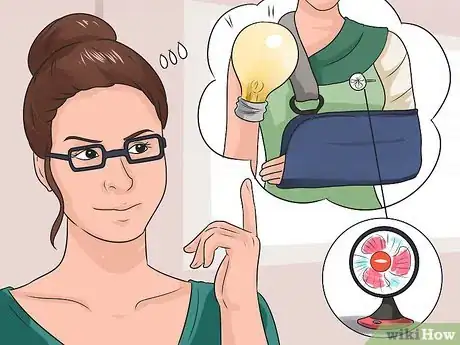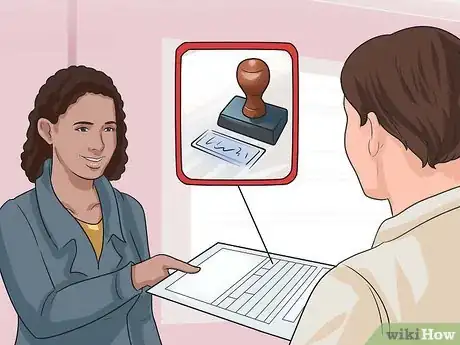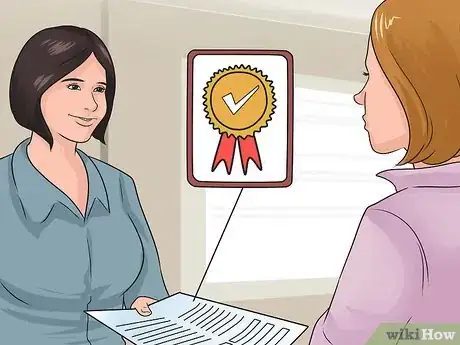This article was co-authored by Andrew Lokenauth. Andrew Lokenauth is a Finance Executive who has over 15 years of experience working on Wall St. and in Tech & Start-ups. Andrew helps management teams translate their financials into actionable business decisions. He has held positions at Goldman Sachs, Citi, and JPMorgan Asset Management. He is the founder of Fluent in Finance, a firm that provides resources to help others learn to build wealth, understand the importance of investing, create a healthy budget, strategize debt pay-off, develop a retirement roadmap, and create a personalized investing plan. His insights have been quoted in Forbes, TIME, Business Insider, Nasdaq, Yahoo Finance, BankRate, and U.S. News. Andrew has a Bachelor of Business Administration Degree (BBA), Accounting and Finance from Pace University.
There are 11 references cited in this article, which can be found at the bottom of the page.
This article has been viewed 61,008 times.
You’re a teenager in the prime of your life, 13 to 20, the opportunities are all the same for all teens. You’re full of energy and have big ideas but you have no money to do the things you want to do. Your parents maybe aren’t rich and even if they were they probably wouldn’t give you a lot of money. Time to earn yourself some money! Be careful though. There are a lot of get-rich-quick schemes that make big promises for little effort. These are probably scams. Earning a lot of money takes a lot of hard work.
Steps
Starting a Business
-
1Choose a business focus appropriate for your circumstances. If you are 14 and still in school, dog walking is more appropriate, for example, than if you are married with a child and 18 years old. Focus your initial energy on figuring out who your business will serve and how. Identify a problem or inconvenience that many people have and create a business idea based on solving this problem.[1] Think about what product or service you could offer. The fastest and most reliable way of making a lot of money is to start your own business. Consider the following fast-growing business fields:
- Technology
- Social media
- App development
- Organic beauty products
- Healthy fast food[2]
-
2Write a business plan. Include information on what you plan to do and what differentiates you from competitors. Incorporate market research that shows your understanding of the business sector you wish to enter. Detail what you will sell and how. Consider including a marketing plan and realistic financial projections, if you are 13-15, get some help from an adult if you need to.[3] This will give you structure as you go about starting your business.Advertisement
-
3Recruit people to work with you. Talk to friends and family about your business idea. Ask them if they know people who might be a good business fit for your company. Recruit online via social media. Find people who are as excited about your idea as you are. It’s important to find partners who can complement your abilities and experience.[4]
-
4Build a prototype or working model. Determine whether you will offer customers a product or a service. Focus on a quality or feature that makes your product or service stand apart from competitors. Put together a prototype of your product or a working model of your business that focuses on this quality. If you intend to open a sweet shop, your working model might be tricky. Test your business with a small number of people to determine customer reaction. Modify your prototype or model based on positive and negative reactions.[5]
-
5Expand your prototype or service to a larger market. Introduce your product or service to a larger market than when you first tested it. Encourage customer feedback to determine if further changes are necessary. The goal is to put together a modest but functioning business model. This will help you entice investors so that you can properly develop your business. Don’t be afraid to take risks as you expand your market.
-
6Raise start-up money. Create a detailed proposal for potential investors. This should include basic information on your product or service. It should also include ideas for expansion and development. Talk to as many people as you can about your business both in-person and using online networking tools. Attend trade shows and fairs, don't skip such though.
-
7Operate your business. Obtain the necessary business licenses and insurance. You may need to have an adult co-sign your public liability insurance documents or other documentation if you are under 18. Make sure to hire someone to manage your accounting. It’s important to know how your business is doing financially in order to make smart investments and stay in business. Advertise your business as necessary and ask clients for referrals. Network with other business owners to leverage your market share. Ensure you keep accurate business records and file and pay your business taxes.[6]
-
8Sell your business. Determine how much your business is worth. Look for a buyer or group of buyers. Talk to people you know and ask them if they are interested or might know people who are. Senior employees may be interested in buying the business. Negotiate a fair price and create an exit strategy for your departure. Selling a successful business is one of the best ways to make a lot of money as a teen.
Developing a Stand-Alone Product or Service
-
1Identify a consumer need. Pinpoint a specific problem or inconvenience that many consumers have. Be as precise about the issue as you can. Write down the issue and consider what product or service might solve this problem. This can be a physical thing or it might be a service you offer. For example, you could build a product like a car or you could provide a service where you repair cars.
-
2Come up with ideas. Brainstorm a list of potential solutions to your problem. Be as creative as possible. Make sure you list everything you think of, even if it seems a bit crazy or impossible. Some of the most successful and useful products and services have been invented by the most imaginative minds.
-
3Secure a patent. Determine whether your product or service is patentable and whether it is worth the cost of securing a patent. This can cost $1500 in costs and fees.[7] Make sure you have accurate records that describe your product and its specifications. Find out if a patent for your product already exists by doing a patent search. Prepare and file an application with the United States Patent and Trademark Office.
-
4Sell your product or service. Engage in direct sales or sell to businesses. Market your product or service online. Talk to potential customers and listen to their needs. You will make more sales if you understand what motivates a customer.[8] Offer discounts for large customers and allow customers to try your product or service before buying it.
-
5License your product or service. Call companies that might be interested in your product or service. Talk to people who can make purchasing and licensing decisions. Focus on what makes your product or service unique and worthwhile. Negotiate a deal for the licensing of your product or service, typically 5 percent of gross wholesale sales.[9]
Investing Your Money
-
1Invest in the stock market. Consider your investing strategy. You can buy shares of stock directly from a company by purchasing direct stock purchase plans.[10] Many people use a reputable stock broker or online trading platform. Invest in stocks, mutual funds, and other financial products. Diversify your portfolio to reduce risk. Reinvest your money or convert it into cash.
- If you already have money you won't need in the short term, try investing in a stock market for your retirement plan.
-
2Invest in housing. Research the housing markets of various cities. Consider the pros and cons of each area. Decide whether you want to purchase single-family homes or a rental property. Consider putting your money in a real estate investment group to increase your ability to invest in high-profile properties. Some banks may balk at giving a 14 years old a mortgage.[11]
-
3Invest in a company. Consider whether you want to invest in a private or public company. Decide whether you want to invest in a start-up company or a more stable and established company. Earnings are lower in large companies but it is much easier to invest and is less risky. Consider your age and whether you have enough time to wait for your investment to show a profit before you turn 20.
Community Q&A
-
QuestionHow do I make a lot of money fast?
 DonaganTop AnswererSell a product or service that is wildly popular with consumers.
DonaganTop AnswererSell a product or service that is wildly popular with consumers.
Warnings
- Never break the law in the process of making money. Many people have developed illegal money-making schemes that are often too good to be true.⧼thumbs_response⧽
References
- ↑ http://www.forbes.com/sites/danschawbel/2012/05/31/how-to-start-a-business-with-only-100-in-the-bank/#11ccca6b6c37
- ↑ http://www.businessnewsdaily.com/2747-great-business-ideas.html
- ↑ https://www.sba.gov/category/navigation-structure/starting-managing-business/starting-business/how-write-business-plan
- ↑ http://www.instigatorblog.com/startup-recruiting/
- ↑ http://fundersandfounders.com/how-to-raise-money-for-your-startup/
- ↑ https://www.irs.gov/Businesses/Small-Businesses-&-Self-Employed/Operating-a-Business
- ↑ http://www.uspto.gov/learning-and-resources/fees-and-payment/uspto-fee-schedule
- ↑ http://www.inc.com/steve-tobak/how-to-sell-anything-to-anybody.html
- ↑ http://www.entrepreneur.com/article/230557
















-Step-18-Version-7.webp)



-Step-17-Version-2.webp)
-Step-16.webp)
-Step-12.webp)
-Step-16-Version-2.webp)
-Step-12-Version-3.webp)


-Step-20.webp)
-Step-18.webp)









-Step-18-Version-7.webp)





































